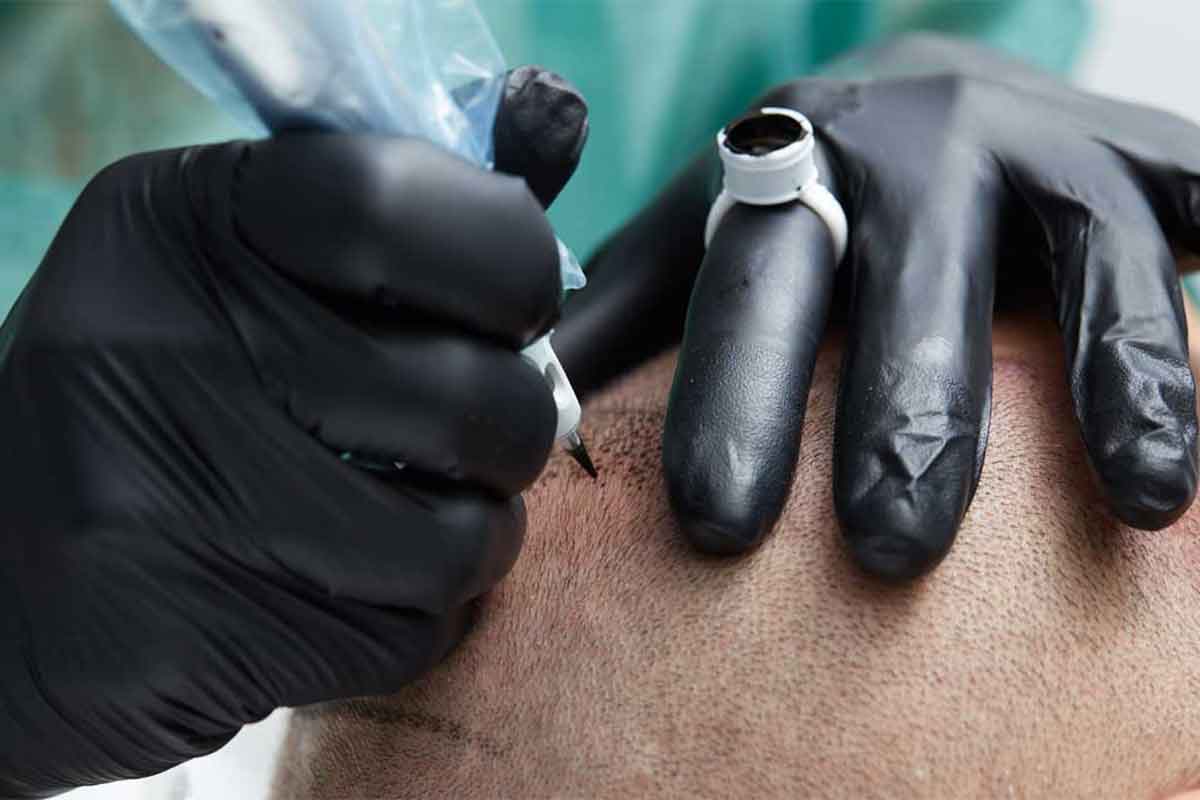Are you tired of dealing with hair loss or thinning hair? Do you want a noninvasive, low-maintenance hair and scalp solution that will give you natural-looking results? Look no further than scalp micropigmentation.
With this effective treatment, you can cover up scars, birthmarks, and other imperfections or simply add density to thinning hair. And the best part? It’s a one-time procedure that requires no surgery, medications, or extensive maintenance.
Say goodbye to the frustration of hair loss and hello to boosted self-confidence with scalp micropigmentation. Read on to learn more about this revolutionary treatment and its benefits.
What Is Scalp Micropigmentation (SMP)?
Scalp micropigmentation (SMP) is a non-surgical hair restoration treatment suitable for both men and women who have experienced hair loss. The process involves depositing tiny impressions or dots of pigment on the scalp, replicating the appearance of shaven hair follicles, and creating the illusion of a fuller head of hair.
SMP is suitable for those with different stages of hair loss and conditions, such as male and female pattern baldness, alopecia, and thinning hair. The affordable treatment can eliminate scalp show-through, camouflage scars, and add density to thin hair. SMP is an instant, permanent, life-changing treatment that makes you look ten years younger. The procedure is virtually undetectable and can be combined with a hair transplant or as a stand-alone treatment.
Does scalp micropigmentation grow hair?
Scalp micropigmentation is a non-surgical cosmetic procedure that involves depositing medical-grade pigment on the scalp to create a natural, hairlike appearance. It is a way to make it look like you have fuller, thicker hair, but it does not grow hair or change your natural hair growth. It is not a hair loss treatment and won’t cause hair loss or damage your existing hair follicles.
The procedure uses a pen-like tattoo machine to “create micro-dotted impressions on the scalp that mimic hair follicles.” It is permanent and useful for someone seeking a purely cosmetic improvement for hair loss. Scalp micropigmentation differs from hair transplant surgery, which involves surgically removing hair follicles from one part of the scalp and transplanting them to the balding area.
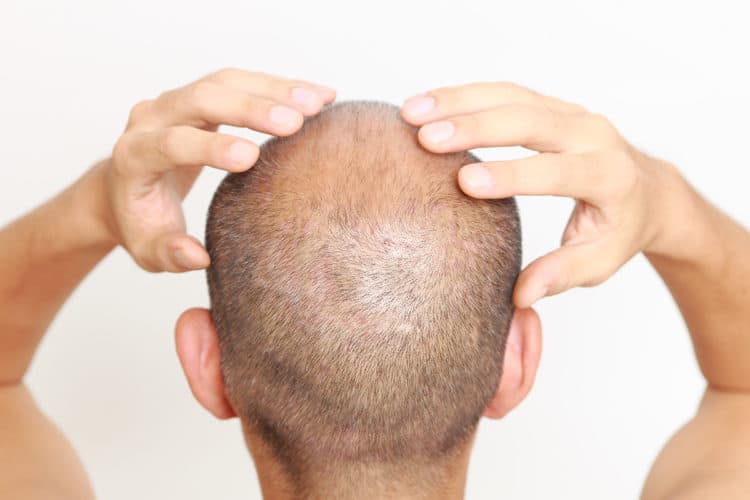
There are almost no significant risks or side effects associated with scalp micropigmentation. Still, it is essential to choose a qualified provider to ensure proper technique and avoid infections or complications.
Scalp micropigmentation (SMP) is a transformative procedure that requires diligent aftercare to ensure optimal, long-lasting results. The following are key steps to follow both short-term and long-term after undergoing SMP:
Short-term Aftercare (Days 1-14):
- Days 1-4: Treat your scalp like an open wound during this period. Do not wash or touch the treated area and refrain from activities that induce sweating. This includes exercising or sitting in the sun.
- Days 5-7: You may now gently rinse your scalp with water and clean the area with a wet cloth. Avoid heavy sweating, scrubbing your scalp, shampooing, and excessive sun exposure. If you need to shave your head, use an electric foil shaver and minimize any visible scabs. Quick, light showers are allowed but avoid sulfate shampoos.
- Days 8-14: Continue to avoid scratching the scalp, using irritants, and wet shaving with a razor blade. You can now gently wash the treated area with water and soap and apply a small amount of fragrance-free moisturizer to enhance the healing process.
Long-term Aftercare (Day 15 and onwards):
- Day 15+: Your scalp may recover sufficiently to return to your daily routine after this period. If another treatment session is scheduled, wash your head and shave your hair before the session.
- First Month: Avoid chlorinated pools, saunas, steam rooms, and tanning beds. When going outdoors, protect your scalp from harmful UV rays by applying sunscreen with at least SPF 50+. Use a fragrance-free, antibacterial soap to wash your scalp, and apply moisturizer after showering and before bed to keep your scalp hydrated. Avoid products that contain Alpha-Hydroxy Acids (AHAs) or high concentrations of alcohol, as these can cause the pigment to fade.
- Ongoing Care: Continue to protect your scalp from direct sunlight and UV exposure to prevent the treatment from fading. Avoid products that list SD alcohol, denatured alcohol, or isopropyl alcohol high on the list of ingredients. Moisturize your scalp daily and use an exfoliating cleanser to keep your scalp looking its best.
Remember, aftercare is key to maintaining the results of your SMP procedure. Consult your SMP practitioner for advice if you have any concerns or additional questions.
The Shaved Look
The shaved look is highly important in scalp micropigmentation as it allows practitioners to customize different hairlines for customers. It also offers the advantage of low maintenance and no irritation from shaving, making it a popular choice for clients.
Practitioners can either zero in on the hairline or opt for a complete shave to make the dots look natural and blend seamlessly with the rest of the hair. The shaved look is ideal for people who want to camouflage burns, scars, or birthmarks or those who desire hairline definition.
For those considering scalp micropigmentation with a shaved look, keeping the hair length short to zero or one guard is recommended. This will provide a seamless blend with the micropigmentation dots and create a natural-looking hairline. Overall, the shaved look enhances the appearance of scalp micropigmentation by providing a realistic and natural hairline that is indistinguishable from the real thing.
SMP for Men
According to the American Hair Loss Association (AHLA), by age 50, around 85% of men are balding. The American Hair Loss Association says that 25% of men with genetic-related hair loss experience it before they turn 21.
Scalp micropigmentation (SMP) is ideal for men experiencing hair loss, specifically those with male pattern baldness (Norwood Scale 1-7), general thinning, bald spots, or a completely bald head. SMP is also suitable for men with scarring from hair transplant procedures or general scars on the scalp. For men with long hair, short hair, thinning hair, or a visible scalp, there’s a way to get the look of a full head of hair.
The treatment involves precisely applying pigments to the scalp, replicating the natural appearance of real hair follicles. SMP provides a safe, non-surgical, and permanent solution for hair loss with guaranteed results. The finished result can be either a shaven style or a dense background to natural hair strands, lasting for years. With the right technique, SMP is undetectable and suitable for men of all ages and ethnicities.
SMP for Women
Scalp Micropigmentation (SMP) is a non-surgical hair restoration treatment suitable for both men and women. Women make up a significant percentage of American hair loss sufferers, and unfortunately, 40% of women have visible hair loss by the time they reach the age of 40.
It’s estimated that around 30 million women in the United States have hereditary hair loss, as reported by the American Academy of Dermatology. This estimate does not include those dealing with thinning hair due to stress, menopause, and other conditions.
SMP is a modern solution to hair loss, which replicates hair follicles by inserting small deposits of pigment on the scalp, offering the result of either a shaven look or a fuller head of hair. SMP is an excellent option for women with all stages of hair loss & conditions like female pattern baldness, alopecia areata, traction alopecia, and general scar camouflage/hair transplant scar concealment.
With the right technique, SMP is completely undetectable and natural-looking, providing a safe and effective hair loss solution that lasts for years.
Micropigmentation for scars
Scalp micropigmentation is an effective treatment for camouflaging scars on the scalp. It can be particularly helpful for individuals who have undergone hair transplants or have scars from injury or surgery. This procedure uses tiny needles to deposit pigments on the scalp, creating the illusion of thicker hair and covering up scars or birthmarks.
The pigments used are cosmetic-grade and permanent, and they can be matched to the individual’s natural hair color and texture. This noninvasive treatment doesn’t require surgery or anesthesia, making it a safe and convenient option for those who want to hide their scars.
Whether you have a scar from a previous hair transplant or surgery or a birthmark or injury that you want to cover up, scalp micropigmentation can help you achieve a natural-looking and confident appearance.
Scalp Micropigmentation Benefits
Scalp micropigmentation is a non-surgical cosmetic treatment for hair loss that uses small needles to deposit pigment on the scalp. Here are the benefits of the procedure:
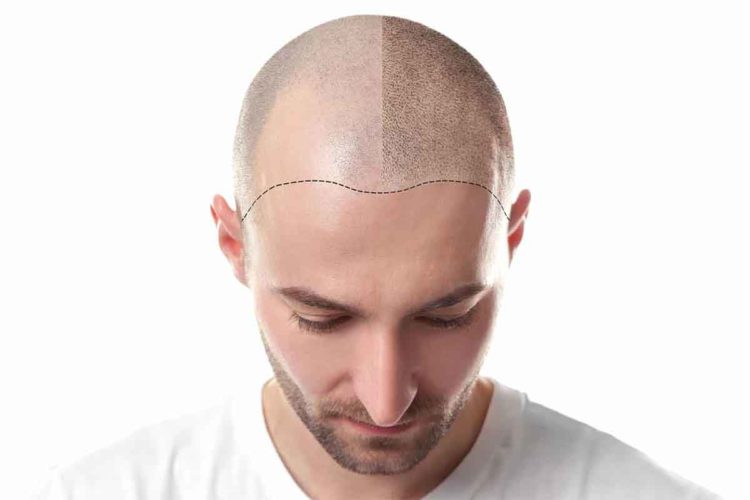
- Less maintenance compared to other hair loss treatments
- No surgery or incisions required
- Economical and cost-effective
- Provides natural-looking results
- Fast-paced recovery time with no downtime
- Boosts self-confidence and self-esteem
- Can be used for all stages of hair loss
- No restrictions related to age or skin type
- Non-invasive and less painful than hair transplant surgery
- Can create a thicker, fuller-looking hairline and crown by creating the illusion of hair follicles and darkening areas where hair loss is starting to appear.
- SMP can be combined with FUE (a traditional hair transplant) for the ultimate hairline results.
Overall, scalp micropigmentation is an excellent option for anyone seeking a hassle-free and effective hair loss solution, whether they have a completely bald head, want to augment a previous hair transplant, camouflage a scar, or add density to thinning hair.
Check out our guide on SMP pros and cons for an in-depth look.
Scalp Micropigmentation Risks and Side Effects
1. Infection
Scalp micropigmentation is a non-surgical cosmetic procedure that involves depositing pigment on the scalp to create the appearance of hair. However, this procedure is not without risks. Infection is a possible complication that can occur due to contaminated tattoo inks, unsterile equipment, and faulty techniques at the tattoo parlor.
To prevent infection, it is crucial to ensure that the tattoo artist is licensed, uses sterile equipment, and follows proper hygiene practices. Signs of infection include fever, severe pain, pus or drainage, severe redness, and swelling. If any of these symptoms are observed, it is essential to contact a healthcare provider immediately.
In conclusion, while scalp micropigmentation can be a safe and effective solution for hair loss, it is essential to understand the risks and take necessary precautions to prevent infection.
2. Inflammation
Scalp micropigmentation is a non-surgical cosmetic procedure that provides instant results without any recovery time or maintenance. However, there are possible risks associated with the procedure, including inflammation. Inflammation can occur due to using unsterilized equipment or needles, faulty techniques, or contaminated tattoo inks.
Inflammation during the healing process can delay recovery time and cause severe pain, redness, swelling, pus, or drainage. If these symptoms persist, contacting a healthcare provider immediately is essential to avoid any possible infection.
In the long term, the chemical composition, adsorption, distribution, metabolism, and excretion of inks used in scalp micropigmentation are still unclear, and some pigments may migrate to the body’s lymph nodes. Therefore, it is crucial to be aware of the possible risks and make an informed decision before undergoing the procedure.
3. Pain
Scalp micropigmentation is a minimally painful procedure that involves using a tattoo machine to create dots or strokes filled with pigment to fill in sparse hair or bald spots. Before the procedure, patients are numbed with topical numbing cream, and the strokes are light, resulting in a scratching sensation that is generally well-tolerated.
However, pain tolerance varies across individuals, and certain areas, such as the temples, may be more sensitive. While there are few risks associated with scalp micropigmentation, possible signs of infection such as fever, pus or drainage, severe pain, redness, or swelling should be reported to a healthcare provider immediately.
4. Bleeding
During scalp micropigmentation procedures, bleeding is uncommon due to the small amounts of pigment deposited into the scalp. Excessive bleeding can cause complications such as ink migration and over-saturation, affecting the final result.
To prevent bleeding, practitioners use a pen-style tattoo machine that gently embeds the ink into the scalp. Patients should also avoid taking blood-thinning medications before the procedure. After the procedure, patients should follow aftercare instructions and avoid activities that may cause bleeding or irritation to the scalp.
5. Problems with Hair Growth
Scalp micropigmentation is a non-surgical procedure that involves injecting pigments into the scalp to simulate the appearance of hair follicles. While the procedure can effectively restore the appearance of a full head of hair, there are potential risks and side effects that can lead to hair growth problems.
One of the most significant risks is the possibility of developing scar tissue, which can prevent hair from growing in the treated areas. Additionally, the pigments used in the procedure may fade over time, leading to an uneven or unnatural appearance.
In some cases, the pigments can also cause an allergic reaction, further damaging the hair follicles and inhibiting hair growth. Before undergoing the procedure, speaking with a qualified professional to understand the potential risks and side effects of scalp micropigmentation is essential.
6. Unsatisfactory Results
While scalp micropigmentation (SMP) is generally a safe and effective solution for hair loss, there is always a risk of unsatisfactory results. Some potential risks and side effects that can lead to unsatisfactory results include over-tattooing, under-tattooing, improper color matching, and improper placement of pigments. Choosing a reputable and experienced SMP practitioner who uses high-quality pigments and equipment is crucial to avoid these issues.
If you are unhappy with your SMP results, options are available. Some practitioners offer touch-up sessions to address any issues or concerns. Laser tattoo removal can lighten or remove the pigments in more severe cases. However, it’s important to note that laser removal can be costly and may require multiple sessions.
Researching and choosing a qualified SMP practitioner is important to minimize the risk of unsatisfactory results. If you experience any issues, don’t hesitate to contact your practitioner to discuss your options for correction.
7. Skin Damage
Scalp micropigmentation (SMP) is a cosmetic procedure that involves tattooing the scalp to create the appearance of fuller hair. While SMP is generally safe, there are potential risks associated with the procedure.
The skin of the scalp has a complex anatomy, with a significant supporting infrastructure for hair, and diseases or surgeries may alter its structure. As such, those with underlying skin conditions such as keloid scarring or active eczema, or psoriasis may want to speak with their dermatologist before undergoing SMP.
Additionally, clients may experience skin damage if they do not follow proper aftercare instructions, such as avoiding exposure to water, sun, and heavy exercise after the procedure. Signs of infection, such as fever, pus or drainage, severe pain, severe redness, and swelling, should be reported to a healthcare provider immediately.
Overall, SMP can be a good cosmetic solution for those with hair thinning, alopecia, and visible scalp scarring. Still, it is important to carefully consider the potential risks and follow proper aftercare to minimize the risk of skin damage.
8. Stress and Anxiety
Scalp micropigmentation can positively impact stress and anxiety levels in patients dealing with hair loss. By restoring the appearance of a full head of hair, patients can feel more confident and less self-conscious about their appearance.
However, it is important to note that the procedure may cause temporary stress and anxiety. Patients may feel nervous about the outcome or the pain associated with the procedure. Healthcare providers must reassure patients and provide them with information about the procedure to mitigate these concerns.
Also, proper aftercare and follow-up can help prevent potential complications that may cause additional stress or anxiety. Overall, scalp micropigmentation can be a safe and effective way to address hair loss in both men and women, with minimal risks or side effects.
9. Reaction from Tattoo Ink
Scalp micropigmentation (SMP) involves using tattoo ink to mimic the appearance of hair follicles on the scalp. As with any tattoo procedure, there are potential risks and side effects associated with using ink on the scalp. These include allergic reactions, infections, and complications from unsterilized equipment and needles.
To minimize these risks, technicians should follow proper sterilization and packaging techniques, use new needles for each client, and ensure the ink is from a reputable source. Clients should also research their technicians and ensure they are licensed and experienced. Any infection or allergic reaction signs should be immediately reported to a medical professional.
10. Medical Procedures and Surgery
Scalp micropigmentation (SMP) is a cosmetic hair tattooing technique for concealing hair and scalp deformities. The procedure involves injecting pigments into the scalp to create the illusion of a fuller head of hair. SMP is performed by either a dermatologist or a hair transplant surgeon who has received specialized training in the technique.
The procedure is generally well-tolerated, and there is minimal downtime associated with it. However, like any medical procedure, SMP is not without risks. Possible complications include infection, scarring, and allergic reactions to the pigments used. It is important for patients to do their homework before deciding on an SMP practitioner and to ensure that the service is performed in a safe and clean environment.
Scalp Micropigmentation Procedure
1. Initial Consultation
The initial consultation process for scalp micropigmentation involves several important steps. Firstly, the practitioner will discuss the client’s medical history and assess their scalp to determine their eligibility for the procedure.
- The practitioner will also work with the client to determine the appropriate pigment color for their skin tone and hair color.
- Setting realistic expectations for the procedure, including the number of sessions required and the potential for touch-ups, is crucial.
- During this consultation, the practitioner should address any questions or concerns the client may have to ensure they understand the process and outcome clearly.
- The initial consultation is essential to the scalp micropigmentation process, providing a foundation for a successful and satisfying outcome.
2. Prepare for your First Session
Preparing for your first scalp micropigmentation session is essential to achieve the best results. Before the procedure, it’s important to moisturize your scalp and avoid using any topical hair products. Additionally, refrain from drinking alcohol or caffeine at least 24 hours before and after the appointment.
On the day of the session, wear comfortable clothing and expect to sit still for one to five hours, depending on the size of the area being worked on. Some discomfort is normal, but your practitioner will apply a topical numbing cream to minimize it.
After the procedure, avoid exposing your scalp to direct sunlight and use a gentle shampoo to cleanse your hair. It’s recommended to schedule two to three sessions for the most dramatic results. Remember, confidence starts with a free 30-minute consultation with a qualified SMP practitioner.
3. Custom Hairline Mockup
The custom hairline mockup step in the scalp micropigmentation procedure is crucial and sets the foundation for the entire procedure. This step aims to create a personalized hairline design that matches the client’s natural hairline and facial features. Here are some key details about the custom hairline mockup step:
- During the initial consultation, the SMP technician will assess the client’s hair loss pattern, hair density, and facial structure to determine the best hairline design for the client.
- The technician will then create a mockup of the hairline using specialized software to adjust the hair follicles’ shape, density, and color.
- The client can review and approve the mockup before the actual procedure begins.
- The mockup guides the technician during the procedure, ensuring the hairline looks natural and symmetrical.
- The technician will use the mockup as a reference point to replicate the hair follicles on the scalp using micropigmentation techniques.
The custom hairline mockup step is essential to the scalp micropigmentation procedure, ensuring a personalized and natural-looking result.
4. Color Selection
Choosing the right color is vital in scalp micropigmentation. It can significantly influence the final look. The pigment color should align with your natural hair color, skin tone, and desired outcome. Your SMP specialist will guide you in this process during your consultation.
“Our experts recommend only getting this treatment from someone who specializes in micropigmentation.”
The practitioner will first create a hairline and make initial impressions. This step ensures the pigment color matches your natural hair color and skin tone. During the second set of impressions, they will fill areas needing more density.
Once you’ve found a specialist you trust, you’ll collaborate to find the best color match. This includes those with grey hair, as color matching can be adjusted to suit your changing hair color. Remember to arrive with a clean scalp and avoid alcohol for 24 hours before your appointment.
The pigment used is organic-based and meets FDA and EU safety guidelines. When applied by an experienced provider, it doesn’t lead to unwanted consequences. Post-procedure, you’ll receive aftercare instructions to ensure optimal results.
5. Undergo the Treatment
Scalp micropigmentation (SMP) is a non-invasive hair restoration treatment that involves depositing medical-grade pigment on the scalp to mimic the appearance of hair follicles. A trained technician or physician performs the treatment, which may take up to five hours, depending on the size of the treatment area. The patient may experience mild discomfort during the procedure, but a numbing cream can alleviate any pain.
After the treatment, the patient may need to avoid certain activities such as getting their scalp wet, heavy exercise, hot showers, sun exposure, sweating, or being in a hot environment for several days. The recovery process is relatively easy, and clients should regularly moisturize the treated area after the fourth day of the final treatment.
The procedure is virtually pain-free, and there are no significant side effects. The patient should visit the office where the service will be performed and follow the provider’s instructions to achieve the best results.
6. Recovery
After undergoing a scalp micropigmentation procedure, the recovery process is relatively easy. Patients should avoid sweating, showering, or tanning for 3-4 days to allow the pigments to settle in the scalp. After this period, a mild cleanser or baby shampoo can clean the scalp.
You may experience some redness or minor swelling, but this should subside within a few days. It is crucial to avoid scratching or picking at the scalp during healing to prevent scarring or loss of pigmentation. Patients can also wear sunblock and protect their scalp from prolonging the results. There is no maintenance required long-term, and the procedure is virtually pain-free. Overall, scalp micropigmentation offers an instant solution with no recovery time, making it an ideal option for those seeking a non-surgical hair restoration solution.
7. Aftercare
Scalp micropigmentation (SMP) is a transformative procedure that requires diligent aftercare to ensure optimal, long-lasting results. The following are key steps to follow both short-term and long-term after undergoing SMP:
Short-term Aftercare (Days 1-14):
- Days 1-4: Treat your scalp like an open wound during this period. Do not wash or touch the treated area and refrain from activities that induce sweating. This includes exercising or sitting in the sun.
- Days 5-7: You may now gently rinse your scalp with water and clean the area with a wet cloth. Avoid heavy sweating, scrubbing your scalp, shampooing, and excessive sun exposure. If you need to shave your head, use an electric foil shaver and minimize any visible scabs. Quick, light showers are allowed but avoid sulfate shampoos.
- Days 8-14: Continue to avoid scratching the scalp, using irritants, and wet shaving with a razor blade. You can now gently wash the treated area with water and soap and apply a small amount of fragrance-free moisturizer to enhance the healing process.
Long-term Aftercare (Day 15 and onwards):
- Day 15+: Your scalp may recover sufficiently to return to your daily routine after this period. If another treatment session is scheduled, wash your head and shave your hair before the session.
- First Month: Avoid chlorinated pools, saunas, steam rooms, and tanning beds. When going outdoors, protect your scalp from harmful UV rays by applying sunscreen with at least SPF 50+. Use a fragrance-free, antibacterial soap to wash your scalp, and apply moisturizer after showering and before bed to keep your scalp hydrated. Avoid products that contain Alpha-Hydroxy Acids (AHAs) or high concentrations of alcohol, as these can cause the pigment to fade.
- Ongoing Care: Continue to protect your scalp from direct sunlight and UV exposure to prevent the treatment from fading. Avoid products that list SD alcohol, denatured alcohol, or isopropyl alcohol high on the list of ingredients. Moisturize your scalp daily and use an exfoliating cleanser to keep your scalp looking its best.
Remember, aftercare is key to maintaining the results of your SMP procedure. Consult your SMP practitioner for advice if you have any concerns or additional questions.
Schedule Follow-up Treatments as Needed
It is important to schedule follow-up treatments for scalp micropigmentation to maintain the best results. While the treatment is semi-permanent, the longevity of the results can vary based on lifestyle, metabolism, and skin condition. To keep the appearance of a full head of hair, it is recommended to schedule touch-up appointments annually or as needed. These appointments typically involve adding more pigment to areas where the color has faded or adjusting the hairline for a more natural look. During the appointment, the SMP technician will evaluate the scalp and make any necessary adjustments to ensure the best possible outcome.
Scalp Micropigmentation Before and After
One of the best ways to understand the transformative power of Scalp Micropigmentation (SMP) is to view before and after images of real patients. These images highlight SMP’s impressive visual impact and offer a tangible representation of the potential results.
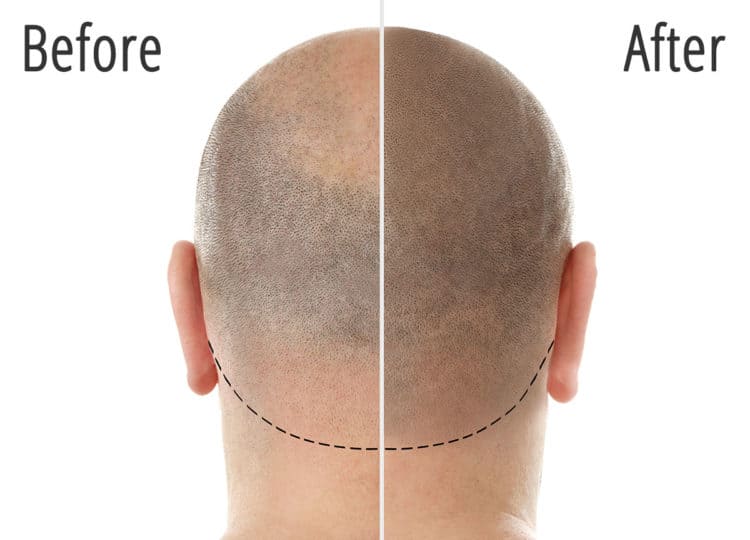
Before SMP, individuals often experience varying degrees of hair loss, thinning, or scarring, significantly impacting their self-confidence. The “before” images typically reflect these conditions, providing a clear snapshot of each individual’s challenges.
After SMP, the scalp appears to have a fuller, denser hairline, and any scars or signs of hair loss are camouflaged effectively. The pigments used in SMP mimic the look of natural hair follicles, creating an illusion of a shaved or short hairstyle. This can dramatically improve an individual’s appearance and boost their self-esteem. The “after” images showcase these transformative results, highlighting the expertise and precision of the SMP practitioners.
To gain a better understanding of the potential results of SMP, consider browsing through some of the following galleries featuring before and after images of individuals who underwent the procedure:
- Scalp Micro USA – Before & After Gallery
- Skalptec – Before & After Gallery
- SMP Ink – Before & After Gallery
- Creative Scalps – Before & After Gallery
Individual results may vary, and the outcomes depend on several factors, including the degree of hair loss, skin type, and the practitioner’s skill. Always consult a qualified SMP professional to discuss your options and potential results.
Best SMP Clinics
Navigating the landscape of SMP clinics can be overwhelming. Trust me; I’ve been there. Years of my own dedicated research led me to ScalpMicro in NYC – a shining example of what an SMP clinic should be.
A blend of reputation, stunning outcomes, and skilled artists mark top-tier clinics. They’ve got the experience, clocking in over a decade of intricate SMP work. You’ll find these gems from the busy New York streets to sunny Los Angeles. Free consultations? They’re standard. Some even offer initial Zoom meetings, though I’ll always vouch for the in-person experience.
Want more? Dive into our detailed post on the best SMP clinics. I’ve done the legwork so you can confidently step into your SMP journey. Some clinics have even worked on A-list Celebrities.
Understanding the Cost of Scalp Micropigmentation
Scalp Micropigmentation (SMP) is a cost-effective solution for hair loss, with the price influenced by several factors. These include the extent of hair loss, the procedure’s complexity, the practitioner’s expertise, and the clinic’s geographical location.
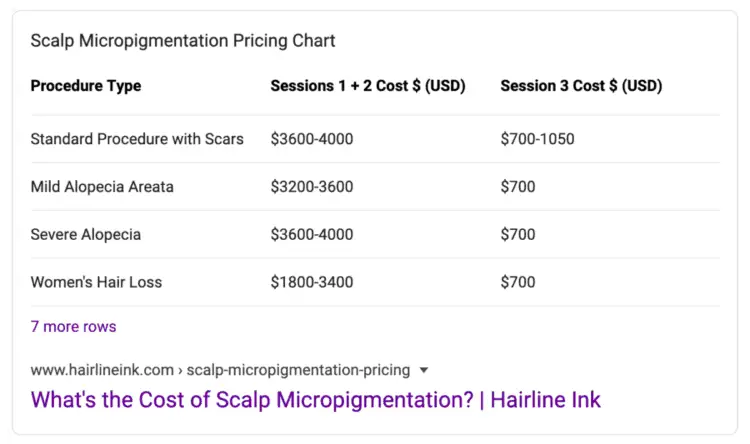
Factors Influencing SMP Cost
On average, the cost of SMP ranges from $1,800 to $4,000, with some cases reaching up to $6,999. The Norwood Scale, a measure of the progression of male pattern baldness, often determines these costs.
For instance, minimal hair loss (Stage 1 on the Norwood Scale) typically costs between $1,200 and $1,800. As the severity of hair loss increases, so does the cost of the procedure. For the most severe form of hair loss (Stage 7), costs typically range from $4,500 to $5,500.
Location and Practitioner’s Expertise
The cost also varies based on the practitioner’s qualifications and skill level. Experienced SMP artists may charge more than those new to the field. Furthermore, the cost of SMP can be higher in major metropolitan areas due to higher demand and operational costs.
Long-Term Investment and Financing Options
While SMP is a significant investment, it is often more cost-effective in the long term than other hair loss solutions like hair systems, products, and transplants. Moreover, many providers offer financing options to make the treatment more affordable. Despite the cost, many individuals find SMP to be a worthwhile investment.
According to RealSelf community members, SMP treatment has an 82% Worth It Rating, with many reporting very natural-looking results. However, some users have reported issues such as pigment fading too quickly or turning blue, which they attributed to the skill level of their provider. In conclusion, while the cost of SMP can vary widely, it is generally seen as a valuable and effective solution for hair loss. As with any investment, it’s crucial to research and consult with experienced providers to ensure you’re making the best decision for your needs.
Over to You
Scalp micropigmentation is a minimally invasive procedure that can benefit men and women struggling with hair loss. It is a great option for those looking for an alternative to hair transplants or medications. If you are considering this treatment, consult a reputable provider to ensure the best possible results.
FAQs
How long does micropigmentation last?
Micropigmentation, or permanent makeup or cosmetic tattooing, typically lasts between 3 and 6 years. However, its longevity can vary based on factors such as skin type, lifestyle, and aftercare practices. Regular touch-ups are recommended to maintain optimal results.
Does anyone regret SMP?
Scalp Micropigmentation (SMP) satisfaction varies between individuals. While some regret SMP due to unrealistic expectations, poor treatment quality, or changing preferences, many find the procedure beneficial for addressing hair loss concerns. It’s essential to research and consult with experienced practitioners to minimize regret.
Does scalp micropigmentation hurt?
Scalp Micropigmentation (SMP) involves minor discomfort, not typically described as painful. Sensations can vary based on personal pain tolerance and the specific area being treated. Numbing creams may be used to enhance comfort during the procedure. It’s comparable to the feeling of a light tattoo.
How does SMP look after 5 years?
After 5 years, the appearance of Scalp Micropigmentation (SMP) can be influenced by factors such as sun exposure, skin type, and aftercare regimen. Some may notice fading or color change, prompting a need for touch-ups. The quality of the original procedure greatly determines its long-term look.
Does scalp micropigmentation look fake?
Scalp Micropigmentation (SMP) can look very natural when performed by an experienced practitioner who accurately replicates hair follicle patterns. However, poor-quality work can result in a fake, unnatural appearance. Therefore, selecting a skilled and reputable provider is crucial for achieving realistic-looking results.

